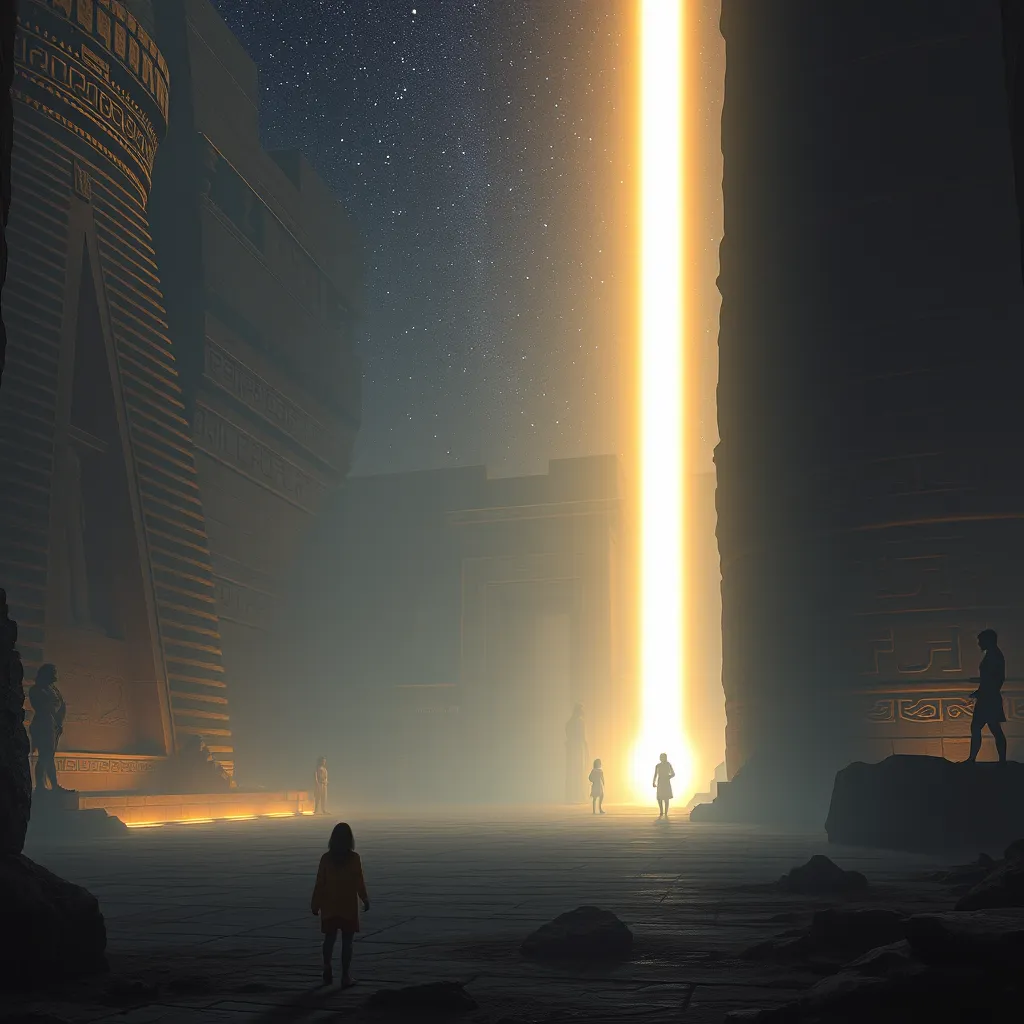The Duat: A Journey Through the Shadows of Time
I. Introduction to the Duat
The Duat, a term steeped in the mystique of ancient Egyptian mythology, refers to the realm of the dead, a place where souls journey after death. It holds immense significance in Egyptian belief systems, acting as the threshold between life and the afterlife. In the Duat, the deceased navigate a complex landscape filled with trials and divine judgment, aiming to achieve eternal life. This article delves into the cultural and historical context of the Duat, exploring its origins, structure, and impact on both ancient and modern understandings of the afterlife.
II. The Mythological Origins of the Duat
The concept of the Duat is deeply rooted in the ancient Egyptian beliefs about the afterlife, which viewed death as a transition rather than an end. This belief system was intricately tied to the cycles of nature, particularly the annual flooding of the Nile, which was seen as a symbol of death and rebirth.
Central to the mythology of the Duat are key deities such as:
- Osiris: The god of the afterlife and resurrection, Osiris presides over the Duat and is often depicted as a mummified king.
- Anubis: The god of mummification and the protector of graves, Anubis guides souls through the Duat and is responsible for weighing their hearts.
The Duat also plays a pivotal role in the Egyptian creation myth, where it is often described as a primordial void from which life emerges, reinforcing the cyclical nature of existence.
III. The Structure and Geography of the Duat
The Duat is not merely a single location but a vast and complex realm composed of varied landscapes and regions, each with its own symbolic significance. Descriptions of the Duat depict a world filled with:
- Rivers of fire: Representing the trials faced by the souls.
- Fields of reeds: Symbolizing paradise for the righteous.
- Darkness and chaos: Areas that represent the dangers and fears of the afterlife.
Within the Duat, the Nile holds especial importance, serving both as a river of transitions and a guide for the souls navigating through its depths. The geographical features of the Duat reflect the Egyptians’ beliefs about the duality of existence, illustrating both the beauty and terror of the afterlife.
IV. The Journey of the Soul in the Duat
The soul’s journey through the Duat is marked by several stages, each crucial for determining the fate of the deceased. Upon death, the soul embarks on a perilous journey filled with obstacles, including:
- Encounters with hostile entities: These spirits test the courage and worthiness of the soul.
- Traversing the waters: The soul must navigate the rivers of the Duat, often with the help of deities.
One of the most significant moments in this journey is the Weighing of the Heart ceremony, where the heart of the deceased is weighed against the feather of Ma’at, the goddess of truth and justice. This ceremony symbolizes the moral judgment of the soul, determining its eligibility for eternal life.
If the heart is found lighter than the feather, the soul is deemed worthy, while a heavier heart signifies sin and leads to the soul’s destruction by the monster Ammit.
V. The Role of Spells and Texts
Ancient Egyptians believed that the journey through the Duat could be aided by specific spells and texts. The most notable of these are the Pyramid Texts and the Book of the Dead, which serve as guides for the deceased.
Funerary texts were essential for:
- Providing instructions for navigating the Duat.
- Offering protection against malevolent spirits.
- Assuring safe passage and a favorable judgment.
Key spells often included invocations to deities, prayers for protection, and affirmations of the deceased’s virtues, underscoring the belief in the power of words to influence the afterlife.
VI. Artistic Representations of the Duat
The Duat has been vividly depicted in ancient Egyptian art and architecture, offering insights into the cultural perceptions of the afterlife. Tomb paintings and carvings often illustrate scenes from the Duat, including:
- Images of the soul’s journey.
- Deities presiding over the judgment of the deceased.
- Symbolic representations of the landscapes found in the Duat.
These artistic representations not only serve a decorative purpose but also function as a means of educating the living about the afterlife, thus enriching their understanding of the Duat and its significance.
VII. The Duat in Modern Culture
The influence of the Duat extends beyond ancient Egypt, permeating contemporary literature, film, and art. Modern interpretations often draw on the themes of death, resurrection, and the journey of the soul.
In literature, authors have used the Duat as a metaphor for personal struggles and transformations. In film, its imagery can evoke the mystery of the afterlife, often portraying the Duat as a realm of both danger and enlightenment.
Moreover, the Duat has found relevance in modern spiritual practices, where it is sometimes referenced in discussions about the soul’s journey after death, reflecting an enduring fascination with ancient beliefs.
VIII. Conclusion: The Legacy of the Duat
The Duat remains a compelling aspect of ancient Egyptian culture, symbolizing humanity’s quest to understand the afterlife. Its significance is not only historical but also relevant in contemporary discussions about death and spirituality.
As we reflect on the journey through the Duat, we recognize the profound impact of these ancient beliefs on our modern perceptions of life, death, and the possibility of existence beyond the grave. Understanding the Duat offers a glimpse into the rich tapestry of human thought regarding mortality, reminding us of the timeless questions that continue to resonate through the ages.





